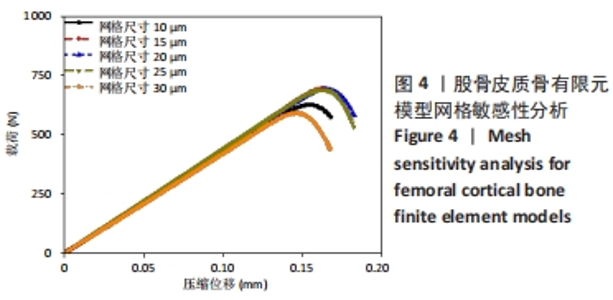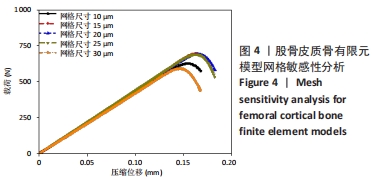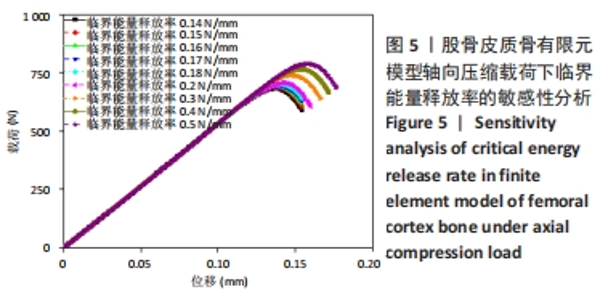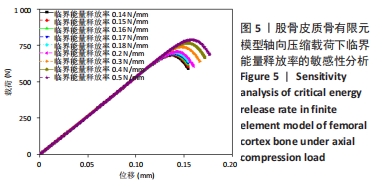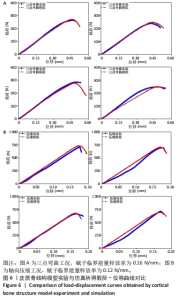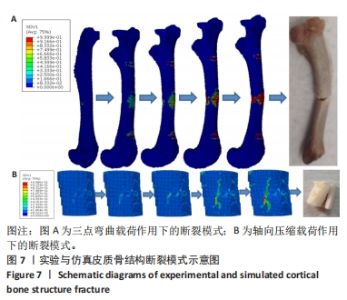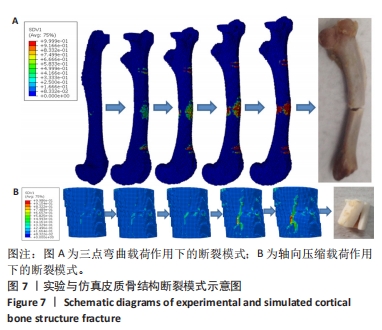[1] DAPAAH D, WILLETT T. A critical evaluation of cortical bone fracture toughness testing methods. J Mech Behav Biomed Mater. 2022;134:105419.
[2] 李兴国, 安兵兵, 张东升, 等. 非自相似分层次结构对骨组织断裂力学性能分析[J]. 医用生物力学,2021,36(1):30-35.
[3] NISSEN FI, ANDREASEN C, BORGEN TT, et al. Cortical bone structure of the proximal femur and incident fractures. Bone. 2022;155:116284.
[4] 杨秀芳, 孙有朝, 赵大旭, 等. 基于IMU的飞行员操纵舒适性评价研究[J]. 重庆理工大学学报,2020,34(6):111-116.
[5] WRIGHT TM, HAYES WC. Fracture mechanics parameters for compact bone-effects of density and specimen thickness. J Biomech. 1977;10:419-430.
[6] SONI A, KUMAR S, KUMAR N. Stochastic failure analysis of proximal femur using an isogeometric analysis based nonlocal gradient-enhanced damage model. Comput Meth Prog Bio. 2022;220:106820.
[7] LI S, ABDEL-WAHAB A, SILBERSCHMIDT VV. Analysis of fracture processes in cortical bone tissue. Eng Fract Mech. 2013;110:448-458.
[8] NORMAN TL, VASHISHTH D, BURR DB. Fracture toughness of human bone under tension. J Biomech. 1995;28:309-320.
[9] 安兵兵, 李凯, 张东升. 皮质骨断裂力学行为的实验研究[J]. 力学学报,2010, 42(6):1164-1171.
[10] FENG Z, RHO J, HAN S, et al. Orientation and loading condition dependence of fracture toughness in cortical bone. Mater Sci Eng C. 2000;11(1):41-46.
[11] 冯祖德. 皮质骨在拉伸型、剪切型和撕裂型加载条件下的断裂韧性──纵向断裂和横向断裂的比较[J]. 生物医学工程学杂志,1997(3):199-204.
[12] WILLETT TL, DAPAAH DY, UPPUGANTI S, et al. Bone collagen network integrity and transverse fracture toughness of human cortical bone. Bone. 2019;120:187-193.
[13] GINER E, BELDA R, ARANGO C, et al. Calculation of the critical energy release rate Gc of the cement line in cortical bone combining experimental tests and finite element models. Eng Fract Mech. 2017;184:168-182.
[14] KUMAR A, SHITOLE P, GHOSH R, et al. Experimental and numerical comparisons between finite element method, element-free Galerkin method, and extended finite element method predicted stress intensity factor and energy release rate of cortical bone considering anisotropic bone modelling. Proc Inst Mech Eng H. 2022;233(8):823-838.
[15] FAN RX, LIU J, JIA ZB. Effects of different numerical methods on the fracture prediction accuracy for cortical bone structure under bending load. Appl Sci Basel. 2023;13:3998.
[16] 范若寻. 老龄相关骨退化对骨宏微观力学性能影响的数值仿真研究[D]. 长春: 吉林大学,2016.
[17] 范若寻, 刘杰, 贾政斌. 不同数值方法模拟皮质骨结构弯曲断裂的准确性[J]. 中国组织工程研究,2024,28(12):1895-1900.
[18] FAN RX, LIU J, JIA ZB, et al. Determination of a tissue-level failure evaluation standard for rat femoral cortical bone utilizing a hybrid computational–experimental method. Proc Inst Mech Eng H. 2022;232(1):80-89.
[19] HAMBLI R. A quasi-brittle continuum damage finite element model of the human proximal femur based on element deletion. Med Biol Eng Comput. 2013;51:219-231.
[20] GAO X, CHEN MH, YANG XG, et al. Simulating damage onset and evolution in fully bio-resorbable composite under three-point bending. J Mech Behav Biomed Mater. 2018;81:72-82.
[21] GAZIANO P, FALCINELLIC, VAIRO G. A computational insight on damage-based constitutive modelling in femur mechanics. Eur J Mech A-Solid. 2022;93:104538.
[22] 张睿. 老龄骨退化及骨质疏松防治的多尺度试验与数值仿真研究[D]. 长春: 吉林大学,2014.
[23] FAN RX, GONG H, ZHANG R, et al. Quantification of age-related tissue-level failure strains of rat femoral cortical bones using an approach combining macrocompressive test and microfinite element analysis. J Biomech Eng. 2016;138: 041006.
[24] NORMAN TL, NIVARGIKAR SV, BURR DB. Resistance to crack growth in human cortical bone is greater in shear than in tension. J Biomech. 1996;29:1023-1031.
[25] KUMAR A, GHOSH R. A review on experimental and numerical investigations of cortical bone fracture. P I Mech Eng H. 2022;236(3):297-319.
[26] KHOR F, CRONIN DS, WATSON B. Importance of asymmetry and anisotropy in predicting cortical bone response and fracture using human body model femur in three-point bending and axial rotation. J Mech Behav Biomed Mater. 2018;87:213-229.
[27] FAN RX, LIU J, JIA ZB. Biomechanical evaluation of different strain judging criteria on the prediction precision of cortical bone fracture simulation under compression. Front Bioeng Biotech. 2023;11:1168783.
[28] ZIMMERMANN EA, LAUNEY ME, BARTH HD, et al. Mixed-mode fracture of human cortical bone. Biomaterials. 2009;30:5877-5884.
[29] NIE YQ, LI DX. Toughening amplification of microcracks in staggered composites. Eng Fract Mech. 2023;290:109475.
[30] DEMIRTAS A, TAYLOR EA, GLUDOVATZ B, et al. An integrated experimental-computational framework to assess the influence of microstructure and material properties on fracture toughness in clinical specimens of human femoral cortical bone. J Mech Behav Biomed Mater. 2023;145:106034.
[31] 许灿, 李明清, 王成功, 等. 皮质骨的多级结构与韧化机制研究进展[J]. 医用生物力学,2018,33(3):273-279.
[32] 王伟军, 刘杰, 刘军, 等. 基于不同应变判定准则模拟皮质骨断裂的准确性[J]. 中国组织工程研究,2020,24(24):3828-3833. |
